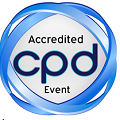
Chih-Hung Ku
Kainan University, Taiwan
Title: Role of a biostatistician in detecting risk factors for surgical-site infection
Biography
Biography: Chih-Hung Ku
Abstract
Cardiac surgery site infection (SSI) is a nosocomial infection. We conducted a prospective study to assess the risk factors for
SSI at the Taipei Veterans General Hospital (TVGH), Taipei city, Taiwan, from July 1999 to August 2000. This study was
approved by the Institutional Review Board. Patients who had undergone cardiac surgery were invited to enroll in the study.
42 potential risk factors for SSI were classified into three stages: 22 in preoperative, 20 in intraoperative, and 2 in postoperative.
42 factors were reduced to 34 after the collinearity diagnostic analysis. Multiple logistic regression analysis using a generalized
logit model was used to assess associations of interest. A total of 471 cardiac surgery patients were enrolled in the study. SSI
incidence rates were 2.5 episodes per 1,000 person-days for the sternum and 3.6 episodes per 1,000 person-days for the leg.
After adjustment for covariates, we found that age, gender, New York Heart Association (NYHA), creatinin, and duration of
surgery were significantly associated with sternal SSI; whereas age, peripheral arterial occlusive disease (PAOD), and length of
stay in the recovery room were significantly associated with leg SSI. We concluded that in addition to patients’ characteristics
(age, gender) and health situations (heart and kidney function, PAOD), the significant findings for duration of surgery and
length of stay in the recovery room confirmed our concern that time is an important parameter in studying risk factors for SSI.
Further study might focus on the relation between infectious agents cultured from wounds and air sampling.

